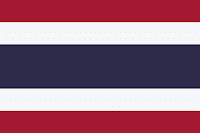* * * * *
Rangoon, Burma
Thursday, 21st
December 1995
Today’s flight was special, for I would be returning to the country
where I was conceived at the beginning of 1942;
when my folks were based at Chauk, north of Rangoon on the Irrawaddy
River, in Burma.
Historically, dear reader, many
changes had occurred in Burma after 1942; most of it not good.
In 1886 the British annexed Burma as a province of British India, and,
until the war in 1941, under British rule the country enjoyed relative peace
and prosperity. That all changed with
the Japanese invasion, and Burmese politicians jumping into bed with the Japs,
thinking they could help oust the British and begin self-rule. However, it eventually dawned on them that if
the Japanese won, the Burmese were scheduled to be abused slaves of the
Japanese Empire. So the Burmese jumped
back into bed with the British and helped to drive out the Japanese.
In 1948 Burma was granted independence and the British left. This was followed by decades of periods of
intense civil wars keeping Burma in a state of destabilization.
For the Burmese peoples’ sake, dear reader, too bad the Brits couldn’t have stayed.
On 2nd March 1962, the military took control of Burma through a coup d'état. Finally, in 1988, unrest over economic mismanagement and political oppression by the military led to widespread pro-democracy demonstrations throughout the country, called the “8888 Uprising”. Security forces killed thousands of demonstrators.
Then, in 1989, the military junta changed the names of the country and
its capital city; without consulting the will of the Burmese people. Therefore we pilots, and some newscasters,
refuse to recognize these new names.
Hence they won’t be mention here,
dear reader, in this account.
Thus the
military junta’s “Burmese Way to Socialism” set the nation on a disastrous path
of cultural, environmental and economic ruin. Insurgency remained endemic among
ethnic-minority rebel groups and, in many areas of Burma, armed struggle became
a way of life.
I’m so glad, dear reader, my parents
didn’t live to see Burma’s current plight.
It would have broken their hearts.
And so, with mixed emotions, I launched my 737 across the Mekong River into Thai airspace, as I climbed to
35,000 feet and took airway R-474 southwest to the Chum Phae VOR in Thailand. At 88 NM (101.2 SM) out from Vientiane, I
intercepted airway G-473, turning right to a west heading, and took it all the
way across northern Thailand to Burmese airspace and the Bago VOR, which set me
up for an intercept of the ILS to Runway Two-One at Rangoon International.
One hour and ten minutes after leaving Vientiane, Laos, traveling 407 NM (468 SM), I touched down on the single runway running southwest by northeast (210°/030° magnetic) having a length of 8,104 feet.
The airport sat 9.3 miles north from central
Rangoon, in the Mingaladon Township. During
World War II, the airfield was known as RAF Mingaladon, for it had several RAF
fighter squadrons based there, plus the 1st AVG Flying Tigers.
Which made me wonder, dear reader,
at how many times had Pappy Boyington landed on this very same runway?
After their invasion of Burma, the Japanese took over Mingaladon Airport,
and turned it into a bomber base. Later,
when the war ended and the Japanese were kicked out of Burma, the Calcutta Metropolitan Airports Authority rebuilt the
airport, and in 1947 it was once regarded as
the best in Southeast Asia. In spite of
this, over the decades this airport fell into disrepair.
I found the runway to be okay, as was the
taxiways, only the terminal and control tower were rundown dumps, with little
in the way of ground or air activity; another ghost town.
Despite this, on the descent to the airport I discovered hundreds of large pagodas dotting the countryside; they were really quite beautiful, sparkling against green fields and jungle.
And they reminded me of what my mother told
me of the great Shwedagon Pagoda, a massive gilded stupa at a height of 326
feet AGL that dominates the skyline of Rangoon.
Rangoon
is located at the convergence of the Rangoon and Bago Rivers,
roughly 19 miles away from the Gulf of Martaban. It also suffers
from deeply inadequate infrastructure, especially compared to other major
cities in Southeast Asia, and is hampered by military imposed curfews which
doesn’t help Rangoon’s sad plight.
Because of the military’s dictatorial iron boot approach to ruling the
Burmese, dear reader, I was never tempted to explore Rangoon on my days
off. In addition, I’m pleased we spent barely
an hour on the ground, for I couldn’t get out of there fast enough.
The highlight of this
trip was the passage over northern Thailand on our return to Laos, at 33,000
feet. Where, on a clear day, I could
spot an utterly amazing, extinct volcano out my left side window. It was in the perfect shape of a heart, and wholly
overgrown with emerald-green jungle; truly spectacular.
* *
* * *


















Comments
Post a Comment